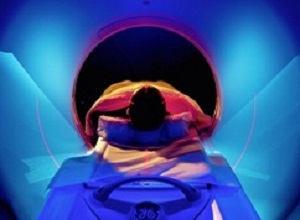 The long-held belief that even low doses of radiation, such as those received in diagnostic imaging, increase cancer risk is based on an inaccurate, 70-year-old hypothesis, according to a study in the Journal of Nuclear Medicine. Evidence demonstrates a reduced, not increased, cancer risk at radiological imaging doses, the study asserts.
The long-held belief that even low doses of radiation, such as those received in diagnostic imaging, increase cancer risk is based on an inaccurate, 70-year-old hypothesis, according to a study in the Journal of Nuclear Medicine. Evidence demonstrates a reduced, not increased, cancer risk at radiological imaging doses, the study asserts.
"We have shown that the claim made by Hermann Muller during his 1946 Nobel Lecture that all radiation is harmful, regardless of how low the dose and dose rate – known as the linear no-threshold hypothesis (LNTH) – was a non sequitur unrecognised by the radiation science community," states Dr Jeffry A Siegel, president and CEO of Nuclear Physics Enterprises, Marlton, New Jersey. "Since then, it has repeatedly been shown that the dose-response relationship may reasonably be considered to be linear but only down to a threshold, below which there is no demonstrable harm and even often benefit. Yet, the LNTH still rules radiation regulatory policy."
Siegel says that policies based on the presumption of harm at every dose level and proposing using lower and lower dosing for CT, x-ray, and nuclear medicine imaging studies – known as the ALARA (as low as reasonably achievable) doctrine – help reinforce existing widespread fear of radiation (radiophobia) in both physicians and patients, due to decades of misinformation. He emphasises, "This fear is unjustified by any scientific findings and is discredited by most experimental and epidemiological studies, which show that low-dose radiation, instead, stimulates protective responses provided by eons of evolution, resulting in beneficial effects."
Citing numerous studies, the authors assert that the LNTH and ALARA are fatally flawed, as they focus only on molecular damage while ignoring protective, biological responses. Low doses of radiation stimulate protective responses and provide enhanced protections against additional damage over time, including damage from subsequent, higher radiation exposures.
Evidence presented demonstrates a reduced, not increased, cancer risk at radiological imaging doses. The Life Span Study (LSS) atomic-bomb survivor data show the LNTH-predicted, low-dose carcinogenicity is invalid below approximately 200 mGy. The effective dose of a typical computed tomography (CT) scan is about 10 mSv; a PET/CT brain scan, 5-7 mSv; and a routine whole-body F-18 FDG PET/CT scan, 12-15 mSv.
Thus, medical imaging's much lower doses for children or adults should not be feared or avoided for radiophobic reasons. The authors reason that the actual risk of misdiagnoses from inadequate dose, or from phobia-driven avoidance of needed imaging studies, should be the main concern.
Siegel advocates for the safety and life-saving benefits of medical imaging, saying, "The task before us is to undo the public's groundless fears of low-dose radiation exposure. The medical profession must be properly re-educated, beginning with diagnostic radiologists and nuclear medicine physicians, and only then can the public be given valid information that they can trust. Furthermore, defeating the LNTH and its offspring ALARA may lead to new ways of diagnosing and treating illness, and, even more importantly, preventing it."
Abstract
Radiologic imaging is claimed to carry an iatrogenic risk of cancer, based on an uninformed commitment to the 70-y-old linear no-threshold hypothesis (LNTH). Credible evidence of imaging-related low-dose ((<100 mGy) carcinogenic risk is non-existent; it is a hypothetical risk derived from the demonstrably false LNTH. On the contrary, low-dose radiation does not cause, but more likely helps prevent, cancer. The LNTH and its offspring, ALARA (as low as reasonably achievable), are fatally flawed, focusing only on molecular damage while ignoring protective, organismal biologic responses. Although some grant the absence of low-dose harm, they nevertheless advocate the “prudence” of dose optimization (using ALARA doses); but this is a radiophobia-centred, not scientific, approach. Medical imaging studies achieve a diagnostic purpose and should be governed by the highest science-based principles and policies. The LNTH is an invalidated hypothesis, and its use, in the form of ALARA dosing, is responsible for misguided concerns promoting radiophobia, leading to actual risks far greater than the hypothetical carcinogenic risk purportedly avoided. Further, the myriad benefits of imaging are ignored. The present work calls for ending the radiophobia caused by those asserting the need for dose optimization in imaging: the low-dose radiation of medical imaging has no documented pathway to harm, whereas the LNTH and ALARA most assuredly do.
Authors
Authors
Jeffry A Siegel, Charles W Pennington, Bill Sacks
[link url="https://www.sciencedaily.com/releases/2017/01/170109150038.htm"]Society of Nuclear Medicine material[/link]
[link url="http://jnm.snmjournals.org/content/58/1/1"]Journal of Nuclear Medicine abstract[/link]
